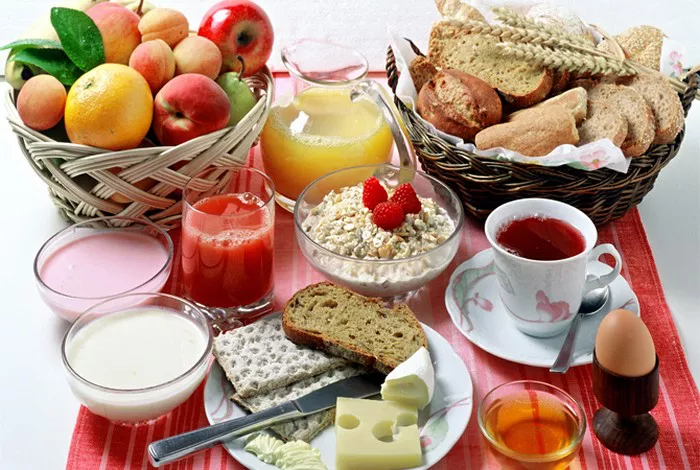Menstrual cramps, also known as dysmenorrhea, can be a monthly struggle for many women. The pain and discomfort experienced during menstruation can vary from mild to severe, and it often interferes with daily activities. While over-the-counter pain relievers can provide temporary relief, incorporating certain foods into your diet may help reduce period pain naturally. By focusing on a balanced diet that includes anti-inflammatory and nutrient-rich foods, you can potentially alleviate some of the discomfort associated with your menstrual cycle.
1. Embrace a Nutrient-Dense Diet
Eating a well-balanced diet that is rich in nutrients can have a positive impact on your overall health, including menstrual symptoms. Ensure your diet includes plenty of fruits, vegetables, whole grains, lean proteins, and healthy fats. These foods provide essential vitamins, minerals, and antioxidants that promote overall well-being.
2. Load Up on Omega-3 Fatty Acids
Omega-3 fatty acids possess anti-inflammatory properties and can help reduce inflammation in the body, potentially easing menstrual cramps. Fatty fish like salmon, mackerel, and sardines are excellent sources of omega-3s. If you follow a vegetarian or vegan diet, consider incorporating chia seeds, flaxseeds, and walnuts into your meals.
3. Increase Iron Intake
Iron plays a vital role in the production of red blood cells and can help combat fatigue and weakness associated with menstruation. Including iron-rich foods in your diet can help replenish your iron stores. Opt for foods such as lean meats, poultry, fish, legumes, tofu, spinach, and fortified cereals to meet your iron requirements.
4. Choose Complex Carbohydrates
Complex carbohydrates provide sustained energy and can help stabilize your blood sugar levels, reducing mood swings and cravings during your period. Opt for whole grains like brown rice, quinoa, oats, and whole-wheat bread. These foods are also high in fiber, which can aid in bowel regularity and reduce bloating.
5. Harness the Power of Magnesium
Magnesium is a mineral that can help relax muscles and reduce cramping. Foods rich in magnesium include dark leafy greens, nuts and seeds (such as almonds and pumpkin seeds), legumes, whole grains, and dark chocolate. Incorporating these foods into your diet may help alleviate period pain.
6. Spice It Up with Turmeric
Turmeric contains a compound called curcumin, which possesses anti-inflammatory properties. Adding turmeric to your meals or drinking turmeric tea may help reduce menstrual pain and inflammation. Consider combining turmeric with black pepper to enhance its absorption by the body.
7. Stay Hydrated
Drinking plenty of water is essential for overall health, and it can also help reduce bloating and water retention during your period. Aim to drink at least eight glasses of water per day. Herbal teas and infused water with fruits like lemon or cucumber can add flavor and hydration to your routine.
8. Include Herbal Teas
Certain herbal teas have been used for centuries to alleviate menstrual symptoms. Chamomile tea, for example, has anti-inflammatory and muscle-relaxing properties that can help ease period pain. Peppermint tea and ginger tea are also known for their soothing effects on the digestive system.
9. Consume Calcium-Rich Foods
Calcium is not only important for bone health but may also help reduce menstrual pain. Low levels of calcium have been associated with increased menstrual cramps. Dairy products like milk, cheese, and yogurt are excellent sources of calcium. If you follow a dairy-free or vegan diet, consider incorporating fortified plant-based milk and leafy greens like kale and broccoli into your meals.
10. Limit Processed Foods and Caffeine
Processed foods, high in unhealthy fats and added sugars, can promote inflammation and worsen menstrual symptoms. Similarly, excessive caffeine consumption has been linked to increased menstrual pain and breast tenderness. Opt for fresh, whole foods and limit your intake of processed snacks, sugary treats, and caffeinated beverages during your period.
11. Experiment with Herbal Supplements
Certain herbal supplements, like evening primrose oil and chasteberry (vitex), have been traditionally used to alleviate menstrual symptoms. However, it’s important to consult with your healthcare provider before incorporating any new supplements into your routine, as they may interact with medications or have contraindications for certain health conditions.
12. Keep a Food Diary
Each woman’s body is unique, and what works for one person may not work for another. Keeping a food diary during your menstrual cycle can help you identify patterns and determine which foods exacerbate or alleviate your symptoms. Note the foods you consume and how they make you feel to make informed dietary choices.
Conclusion
While there is no one-size-fits-all solution for reducing period pain through diet, making conscious food choices can potentially alleviate some discomfort associated with menstruation. Incorporate a variety of nutrient-rich foods, prioritize anti-inflammatory options, and stay hydrated. Remember to listen to your body and consult with a healthcare professional if your menstrual pain is severe or interferes with your daily life. With a balanced approach to nutrition, you can support your overall well-being and potentially find relief from menstrual cramps.

























